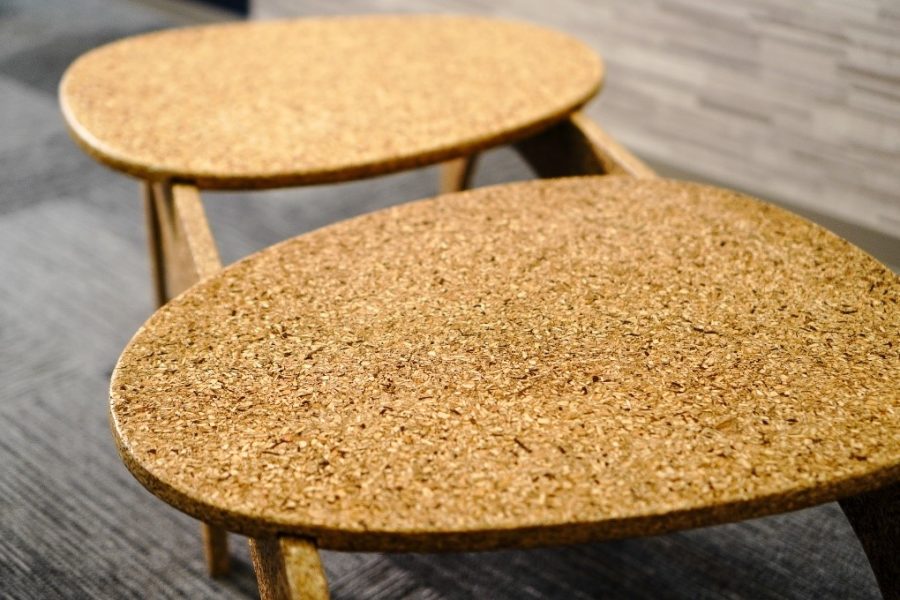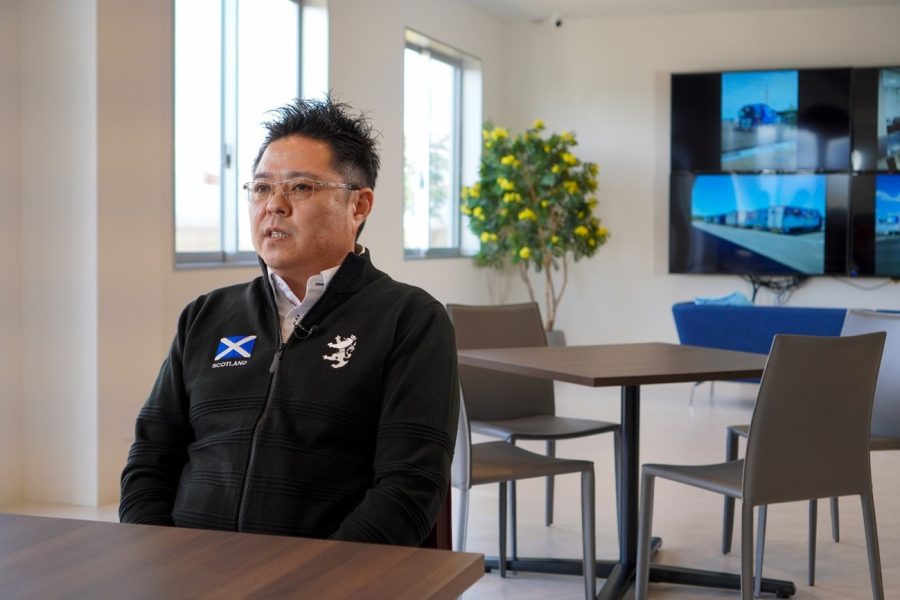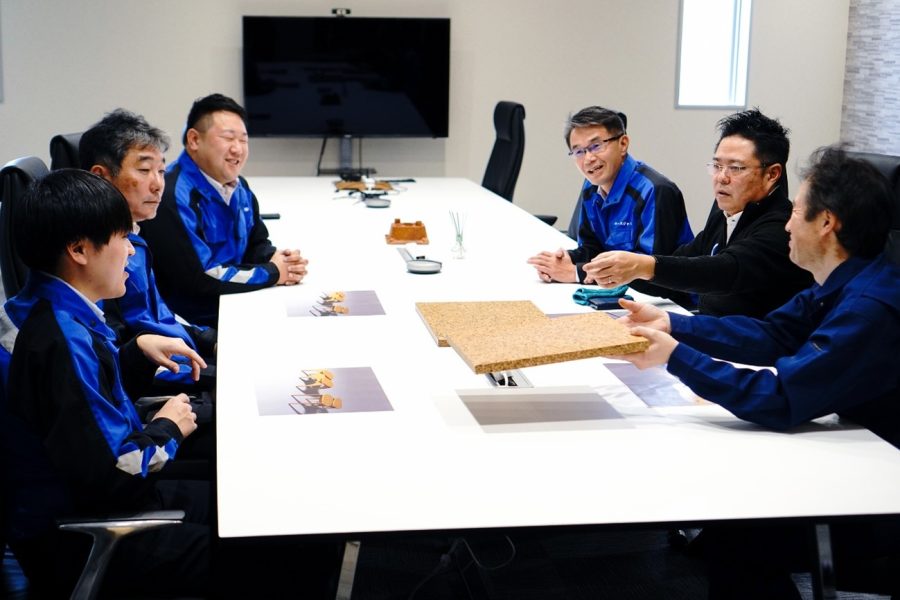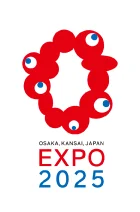
There is a venture firm in Kyoto that decided to tackle environmental issues with its original technology utilizing a large amount of wood chips, leaves and bark left after logging. It is the general logistics trading company “Ace Japan.” They are going to leverage this technology to provide 2,000 benches, the largest number, to the Expo venue as part of the Co-Design Challenge. What they proposed is a “future bench made of unused lumber from forest thinning.” Let’s have a look at the aspirations of the entrepreneur who sets his eye on the world through the Expo, paving a way with his belief.
Ace Japan was born in Seika Town, Kyoto Prefecture in April 2010. Keita Hando just turned 40 years old in that year. Starting from a small room in a start-up incubation facility, he had no contacts or funds, but was sure of his inquisitive mind and quick adaptability cultivated through long years of sales. He decided to started business with pallets used for carrying cargoes. Those were no ordinary pallets. They would be made of wood chips, bark and leaves scattered over mountain forests, parks and under roadside trees – the masses of unused lumber left behind after logging.
He got the idea several years before founding the business. While driving along a road in the mountains, he was met with a sight of masses of wood chips from forest thinning, which covered the mountain surface, overflowing out even to the road. While it is said that these wood chips turn into compost for the soil, he was concerned that they could bring about a negative impact in blocking the water current on the mountainside and hindering the growth of other trees if there are too much of them. When he raised a question to the relevant section of Kyoto Prefecture through the Keihanna Science City (official name: Kansai Science City), he was introduced to the Kyoto Prefecture Federation of Forest Owner’s Cooperative Association as the contact for this inquiry. Finding out that among logged lumber, especially branches, leaves and treetops are abandoned in the forest, believed to be useless, he thought that he could make use of them, and set out to engage in research and development. To find a way to a lasting solution, he had to create a business with methods for utilizing this lumber.
As he was considering an item that could use masses of unused lumber, he came across pallets. In addition to the remarkable growth of pallet production to lessen the burden on drivers, lumber accounted for 70% of the material at that time, posing an issue as pallets were disposed of after usage. Hando was struck with inspiration, thinking that “if it goes well, all kinds of trouble can be solved in one go. I can strike a balance between business and contribution to the society.”
However, he experienced a succession of toil in producing such a technology. In order to mold fine wood chips, bark and leaves into a board that can hold weight of over one ton, he devised a production method of granulating them into chips with a mill and compressing them with a press machine after various processes. For that, he needed a specific mold and a press machine.
He walked around looking for someone who could help him. Nevertheless, no matter where he went, he was dismissed with a laugh, told that he could hardly make a pallet sufficiently strong for transport just by solidifying wood chips. Flying to Tokyo, Nagoya, Shizuoka and Hiroshima to turn to his connections, he continued to spend days of disappointment as his visits kept ending up in vain. He approached every company in the industry that he could think of, and was turned down by as many as about 30 companies. Just as he was about to give up, he met a certain skilled workman from Higashiosaka City, Osaka Prefecture.


Share this article


